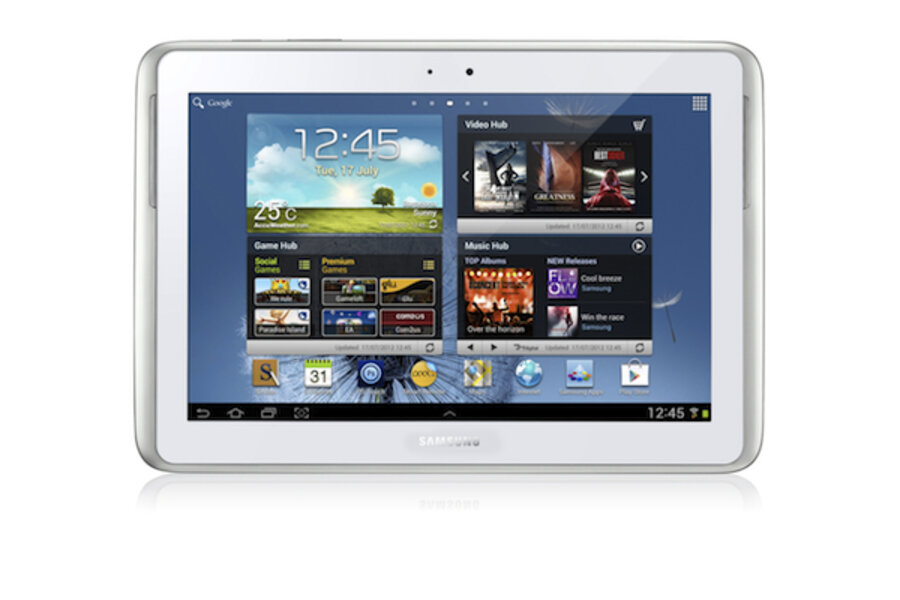Samsung Galaxy Note 10.1 stabs at iPad with its stylus
Loading...
According to a recent report from IDC, Apple owns a stunning 68 percent of the global tablet market.
But there's always room for a few good competitors. The latest is the Galaxy Note 10.1, a 10-inch tablet unveiled this week by Samsung. Like the Apple iPad, the Galaxy Note 10.1 will ship in 3G/4G and Wi-Fi-only versions – and like the iPad, the Note will play a range of HD content. Unlike the iPad, the Note will include a stylus called the S-Pen, which will allow users to scribble out illustrations or jot down notes.
"History has shown that taking notes, capturing ideas immediately, and sketching to realize them is the most personal and natural way to be more productive and creative," Samsung exec JK Shin said in a press release today. "The advanced technology and features included in [the Note] give users the power to produce, create and customize communications."
Samsung has labeled the Note, which is expected to launch in the US and UK this month, an "ideal learning tool." (The idea being, we suppose, that students would rather take notes with a pen than a keyboard.) To that end, the Note will include a "Learning Hub," with "extensive multimedia educational content for all ages," and the ability to write directly on eTextbook files.
Still, Samsung has stressed, the Galaxy Note 10.1 is only for students. This is a tablet with a good deal of firepower, from the 1.4GHz quad-core processor to the 2GB of internal RAM and the dual cameras – one 5-megapixel main camera and a 1.9-megapixel front-facing lens. (Check out the video below for a more detailed Galaxy Note walk-through.) But back to that S-Pen.
Having become accustomed to the touch-screen on the iPad, Nexus 7, and Amazon Kindle Fire, will we really want to start packing a portable pen? John P. Mello Jr. of PC World isn't so sure.
"Scribbling on an electronic display is so unlike writing on paper that only niche users – artists, delivery drivers, meter readers, Palm fetishists and such – will tolerate it," Mello writes. Moreover, he adds, "to emphasize it as a trailblazing technology is lame. If Samsung thinks it can sell stylus input as a competitive advantage over the iPad, then the iPad is going to remain in the catbird's seat in the tablet market for some time to come."





